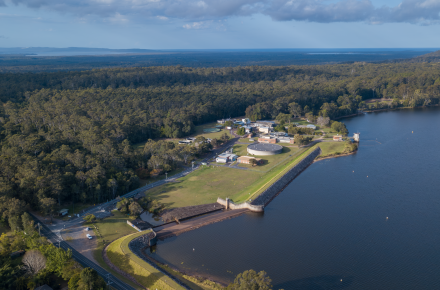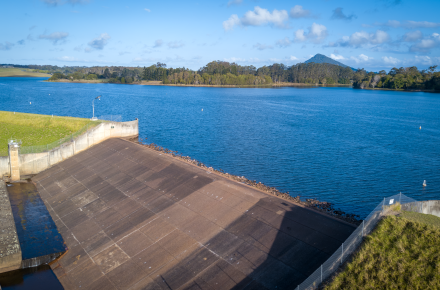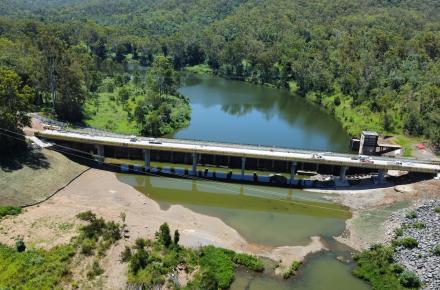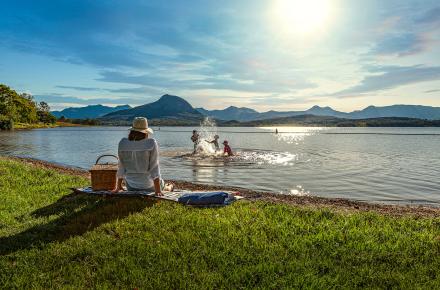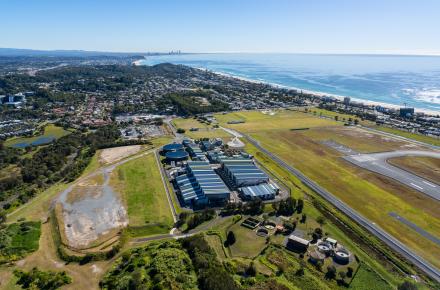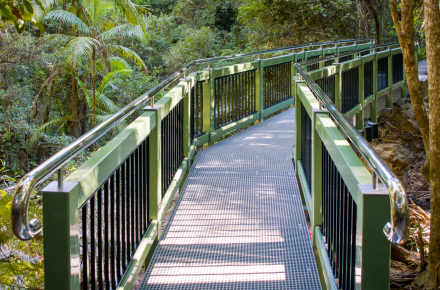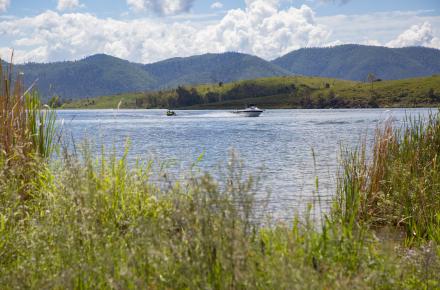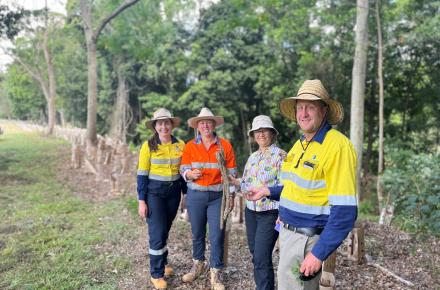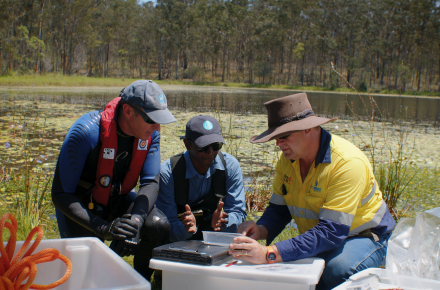Land care projects that are being delivered to improve water quality along the Mary River, are having flow-on benefits for the Great Barrier Reef – more than 1000km away.
Seqwater has been working with the Mary River Catchment Coordinating Committee (MRCCC) to deliver a series of projects including weed control, revegetation and riverbank stabilisation works to improve water quality in the Mary River.
MRCCC Project Officer, Brad Wedlock said the Mary River had one of the most diverse catchments in Queensland but was also one of the highest contributors of pollutants found in the Great Barrier Reef.
“The Mary River catchment flows into the Great Barrier Reef,” Mr Wedlock said. “The catchment spans about 9,500 km2 from Maleny to Fraser Island and supports industries including dairy, beef, forestry, fishing, horticulture, mining and gravel extraction.
“While these industries are crucial for our local economies, they can cause erosion and deliver pathogens to our waterways which impact water quality”.
“The MRCCC and Seqwater are working in partnership with other land care groups and landholders to improve land management practices through technical advice, training and support for on-ground projects in the area.
The Reef Water Quality Report Card released in February 2021 by the Federal and Queensland Government showed a reduction in pollution discharging from all Great Barrier Reef catchments, giving a cumulative reduction of 25.5% since 2013.
Mr Wedlock said the land care work being done in the Mary River catchment was indeed contributing to the reduction in pollution, highlighting the importance of the work and how far the benefits stretched.
Seqwater Source Protection Planning Principal Greg Greene said Seqwater had contributed more than $1,700,000 to the program over 5 years which was also improving drinking water quality for the Gympie, Noosa and Sunshine Coast regions.
“In the past year alone, Seqwater and MRCCC have treated more than 147ha of vine weed, installed more than 1,400m of fencing to stop cattle from entering the river, and maintained more than 1.8ha of vegetation along the river bank,” Mr Greene said.
“The Mary River is the main drinking water supply for Gympie, Kenilworth and is also used to supplement supply for the Noosa community’.
“The social fabric of the Mary Valley is built on a strong farming background and sourcing water from open catchments such as the Mary, requires a program to work with the community to manage water quality hazards from the many competing land uses along the catchment’s waterways.
“Seqwater values our partnership with the MRCCC – both organisations share a commitment to sustainable catchment management, improving our drinking water sources and protecting our environment,” Mr Greene said.
Some of the work delivered by Seqwater and MRCCC across the Mary River catchment in 2020 includes:
- Projects implemented (no. of properties) – 36
- Dairy effluent systems upgraded (no. of properties) – 3
- Off-stream watering installed (no. of properties) – 3
- Laneway hardened (m) – 1480m
- Riparian zone fenced (m) – 1410m
- Vine weed treated – cumulative (ha) – 147.8ha
- Revegetation maintained (ha) – 1.8ha
- Cat’s claw vine bio-agents released (no. of insects) – 26,200
